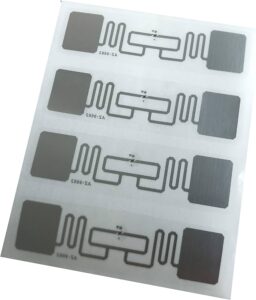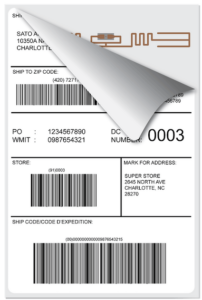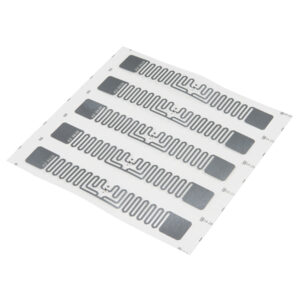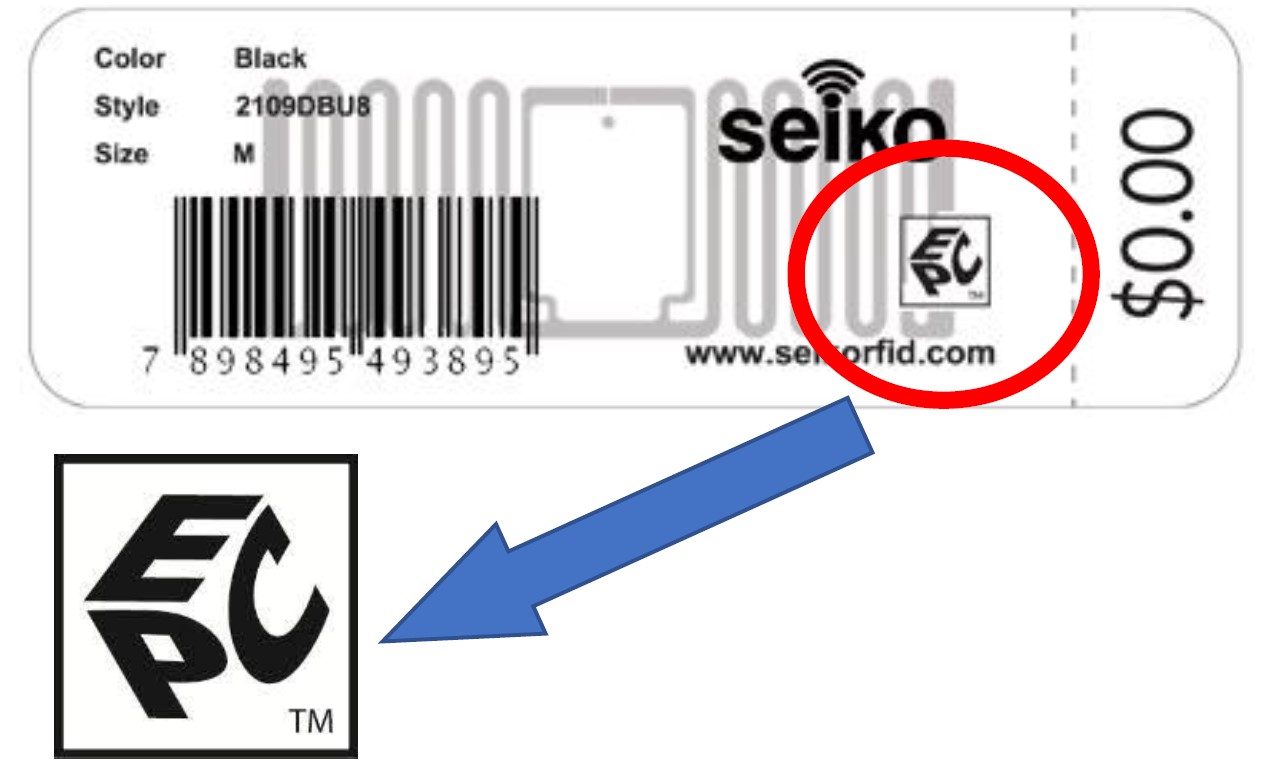RFID Labeling (Radio Frequency Identification)
An RFID (Radio Frequency Identification) label is an electronic device that exchanges data with a radio frequency identification (RFID) reader by using radio waves.
Most RFID labels are made up of at least two main parts. The first an antenna, which receives radio frequency (RF) waves. The second is an integrated circuit (IC), which is used for processing and storing data, as well as modulating and demodulating the radio waves received/sent by the antenna.
An RFID label is also known as a RFID chip.
An RFID label is like a barcode in that is container information, but RFID tags are far more advanced, sometimes referred to as smart label. RFID labels does not require line-of-sight and can be performed over a distance of a few meters. This also means that a single label can serve multiple readers at a time.
The kind of label depends on the product to which the label is attached. RFID systems can operate in either Ultra High Frequency (UHF), High Frequency (HF) or Low Frequency (LF). Labels can vary in terms of the frequencies on which they operate.
There are hundreds of different RFID labels available in various shapes and sizes with features and options specific to the product and its environment. RFID labels can be applied to almost anything.
Label pricing depends on the type of label and the quantity that are being used. Inlays typically vary between $0.10 – $1.80 and more complex labels can vary between $1.00 – $20.00 each.



What does this logo mean on the RFID label? The Electronic Product Code™ (EPC) is syntax for unique identifiers assigned to physical objects, unit loads, locations, or other identifiable entity playing a role in business operations.
EPCs have multiple representations, including binary forms suitable for use on Radio Frequency Identification (RFID) tags, and text forms suitable for data sharing among enterprise information systems.
GS1’s EPC Tag Data Standard (TDS) specifies the data format of the EPC and provides encodings for numbering schemes — including the GS1 keys — within an EPC.
Just as there are many types of barcodes, all RFID tags are not the same. Active and passive tags, NFC, UHF, HF, LF, they all work to meet the requirements of specific use cases. GS1 standards are focused on UHF and HF passive RFID tags. The most broadly implemented tags in our industries are UHF passive tags, also known as RAIN RFID tags.
When unique EPCs are encoded onto individual RAIN RFID tags, radio waves can be used to capture the unique identifiers at extremely high rates and at distances well in excess of 10 meters, without line-of-sight contact. These characteristics of RAIN RFID can be leveraged to boost supply chain visibility and increase inventory accuracy.
We can print / encode / apply the label as well but speeds are significantly slower than simply applying an already encoded label.

Contact one of our labeling specialists to figure out the complicated world of RFID
(800) 837-1309
Sales@QLC-Labeling.com
